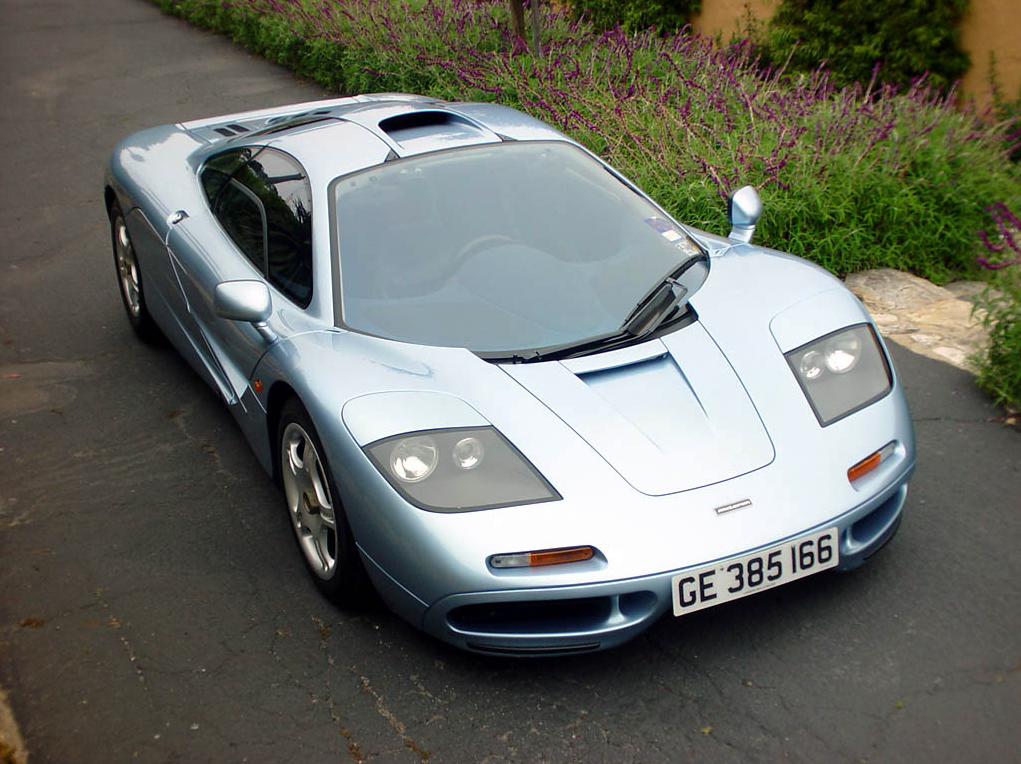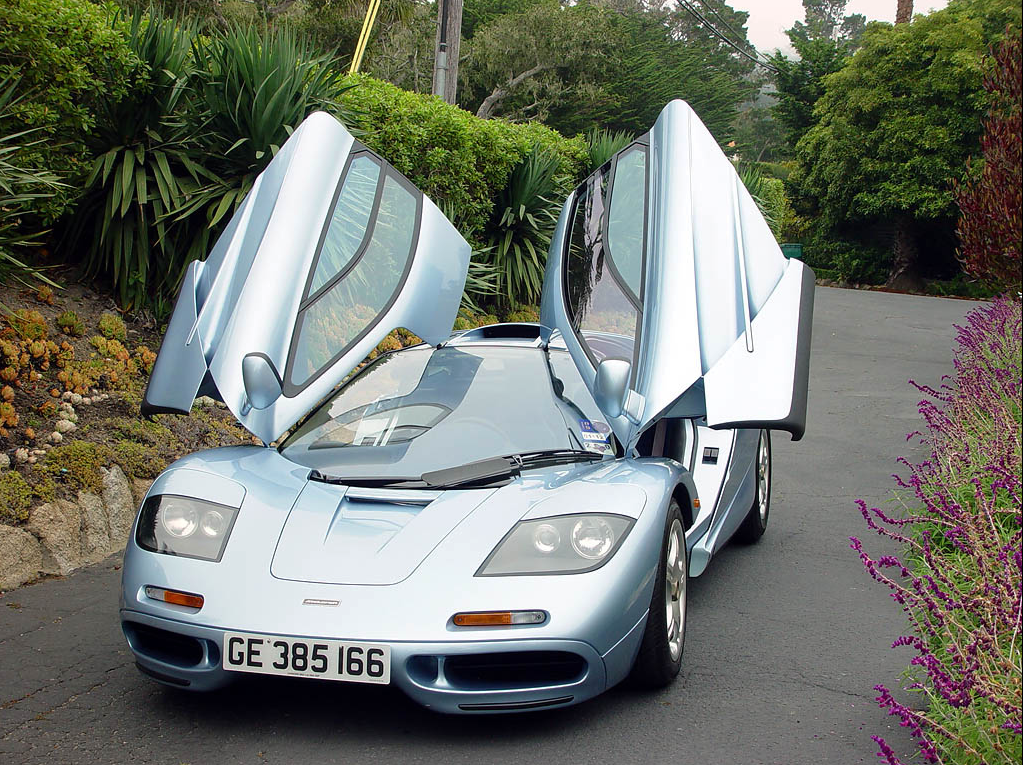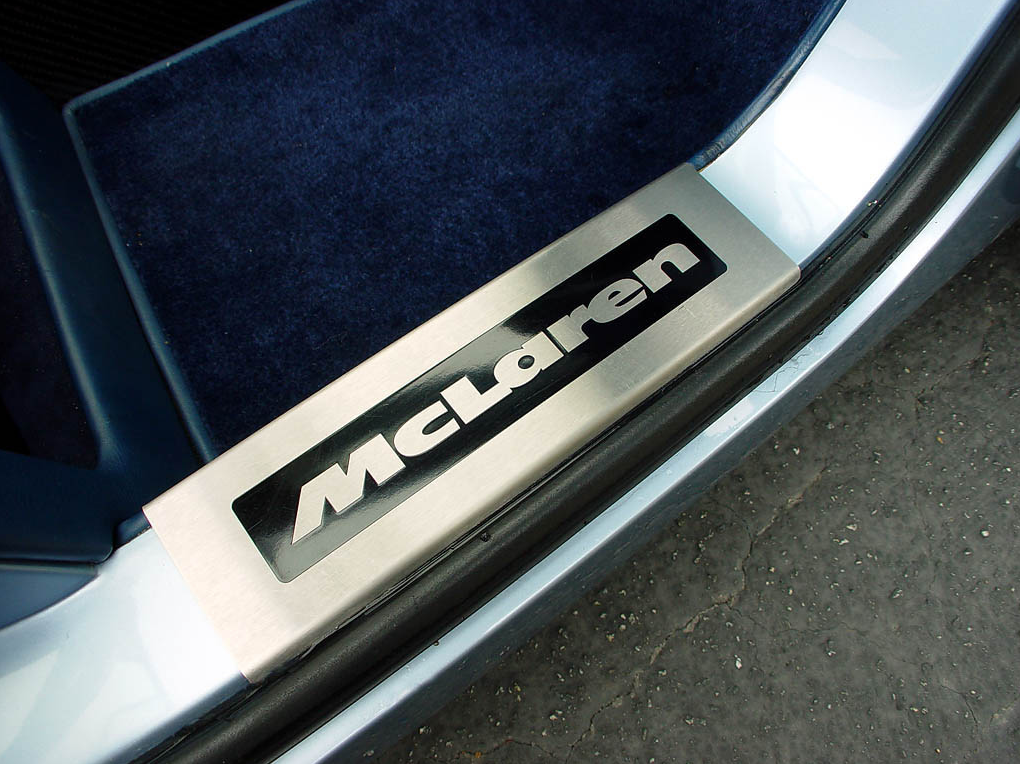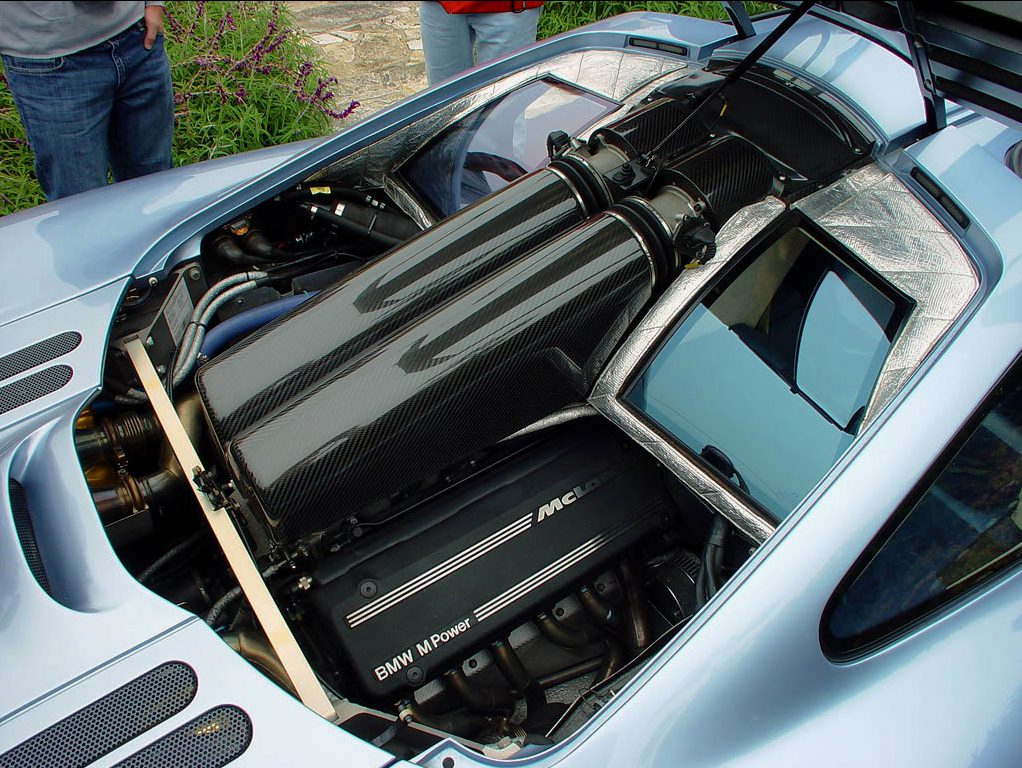The McLaren F1 is a sports car designed and manufactured by McLaren Automotive. It was the first production car to use a carbon-fibre monocoque chassis. The car features numerous proprietary designs and technologies; it is lighter and has a more streamlined structure than many modern sports cars. The car features a central driving position – the driver's seat is located in the middle, ahead of the fuel tank and ahead of the engine, with a passenger seat slightly behind and on each side. The doors on the vehicle move up and out when opened, and are thus of the butterfly type.
It features a powerful engine and is somewhat track oriented, but not to the degree that it compromises everyday usability and comfort. It was conceived as an exercise in creating what its designers hoped would be considered the ultimate road car. Powered by a BMW built 6.1 L (6,064 cc) 60-degree V12 engin. 6-speed manual. Approximately 16 g (0.8 ounce) of gold foil, a highly efficient heat-reflector, was used in each car. The road version F1 produces 627 hp. 0–60 mph (97 km/h) takes 3.2 seconds wth a top speed of 240 mph (386 km/h).
On 31 March 1998, it set the record for the world's fastest production car in the world, reaching 231 mph (372 km/h) with the rev limiter enabled, and 243 mph (391 km/h) with the rev limiter removed. The F1 remains as of 2013 one of the fastest production cars ever made; succeeded by very few cars, including the Koenigsegg Agera R, the Bugatti Veyron, the SSC Ultimate Aero TT, and the Bugatti Veyron Super Sport. However, all of the superior top speed machines use forced induction to reach their respective top speeds, whereas the McLaren F1 is naturally aspirated.
Only 106 McLaren F1s were manufactured. 64 of which were the standard street version (F1), 5 were LMs (tuned versions), 3 were longtail roadcars (GT), 5 prototypes (XP), 28 racecars (GTR), of which 10 were "longtails" versions, and 1 LM prototype (XP1 LM). Production began in 1992 and ended in 1998. At the time of production each machine took around three and a half months to make.
Only 106 McLaren F1s were manufactured. 64 of which were the standard street version (F1), 5 were LMs (tuned versions), 3 were longtail roadcars (GT), 5 prototypes (XP), 28 racecars (GTR), of which 10 were "longtails" versions, and 1 LM prototype (XP1 LM). Production began in 1992 and ended in 1998. At the time of production each machine took around three and a half months to make.
(wikipedia)
Standard Street Version F1 (64 copies made)
F1 GTR (28 copies made)
Racing versions of the F1 to compete in international series. Three different versions of the race car were developed from 1995 to 1997. Many F1 GTRs, after the cars were no longer eligible in international racing series, were converted to street use. By adding mufflers, passenger seats, adjusting the suspension for more ground clearance for public streets, and removing the air restrictors, the cars were able to be registered for road use.
1997 F1 GTR "Long Tail" (10 copies made)
This particular white McLaren F1 GTR Longtail (chassis number 021R) won FIA GT Championship races in Germany and Finland, making it one of the most successful F1 GTRs ever campaigned and earning its place in the pantheon of McLaren lore. Sold in 2014 Scottsdale, Arizona, for $5.28 million. (autoblog.com)
F1 LM (5 copies made)
Built in honour of the five McLaren F1 GTRs which finished the 1995 24 Hours of Le Mans, including taking the overall win. The F1 LM used the same engine as the 1995 F1 GTR, but without race-mandated restrictors, to produce 680 hp (507 kW; 689 PS). It had a top speed of 225 mph (362 km/h), which is less than the standard version because of added aerodynamic drag, despite identical gear ratios. The LM is 76 kg (168 lb) lighter than the stock F1 – a total mass of 1,062 kg (2,341 lb) – achieved by having no interior noise suppression, no audio system, a stripped-down base interior, no fan-assisted ground effect and no dynamic rear wing. In the place of the small dynamic rear wing there is a considerably larger, fixed CFRP rear wing mounted on the back of the vehicle.
XP1 LM Prototype
F1 GT "Long Tail" (3 copies made)
McLaren required extensive modification to the F1 GTR in order to remain competitive. These modifications were so vast that McLaren would be required to build a production road-legal car on which to base the new race cars. The final incarnation of the roadcar, the F1 GT was meant as a homologation special. They featured the same extended rear bodywork as the GTRs for increased downforce and reduced drag, yet lacked the rear wing that had been seen on the F1 LM.
The front end was also similar to the racing car, with extra louvers and the wheel arches widened to fit larger wheels. The interior was modified and a racing steering wheel was included in place of the standard unit.
The front end was also similar to the racing car, with extra louvers and the wheel arches widened to fit larger wheels. The interior was modified and a racing steering wheel was included in place of the standard unit.
(Photos from flickr.com, autowp.ru, netcarshow.net)












































































































